A summarizing review of what has been happening at the crypto markets. A look at trending sectors, liquidity, volatility, spreads and more. The weekly report in cooperation with market data provider Kaiko.
Bitcoin dropped 5% early Tuesday as the U.S. Dollar index climbed to four month highs. Meanwhile, SBF was sentenced to 25 years, three AI protocols announced plans to merge, and the London stock exchange decided to allow applications for crypto ETNs. This week we explore:
- The impact of the KuCoin charges
- What to expect from the Bitcoin halving
- Bitcoin's falling correlation with altcoins
KuCoin sees strong outflows after DOJ indictment
Last week, crypto exchange Kucoin faced charges from the Department of Justice (DOJ) for violating anti-money laundering laws and a lawsuit from the CFTC over its ETH margin trading. Despite being one of the fastest-growing exchanges this year, Kucoin is now facing significant outflows as traders rapidly exit the exchange.
Volume and market share plummeted after the back-to-back lawsuit announcements on March 26. Daily volume fell from around $2bn to $520mn, even though KuCoin promised a $10mn airdrop. Market share more than halved from 6.5% to less than 3%.
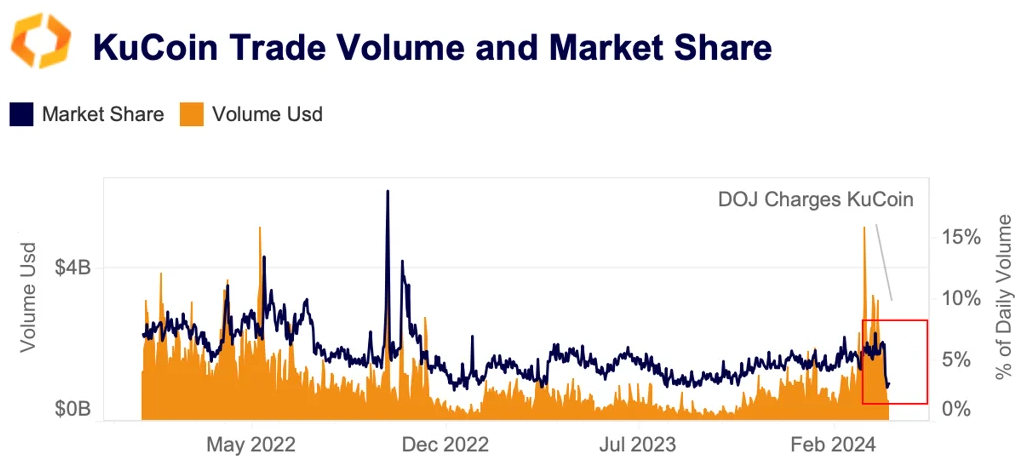
Kaiko’s Wallet Data shows that Kucoin users have been moving their funds to other centralized exchanges such as Coinbase, Binance, OKX, MEXC, and Gate.io, which they perceive as safer options. Some of the outflows can also be attributed to market makers leaving the exchange. In addition to transferring funds to other exchanges, some users are sending their funds directly to their on-chain wallets.

Outflows from wallets attributed to KuCoin totalled more than $600 million on March 26, outpacing inflows by a large margin. Most of the outflows were USDT and ETH.
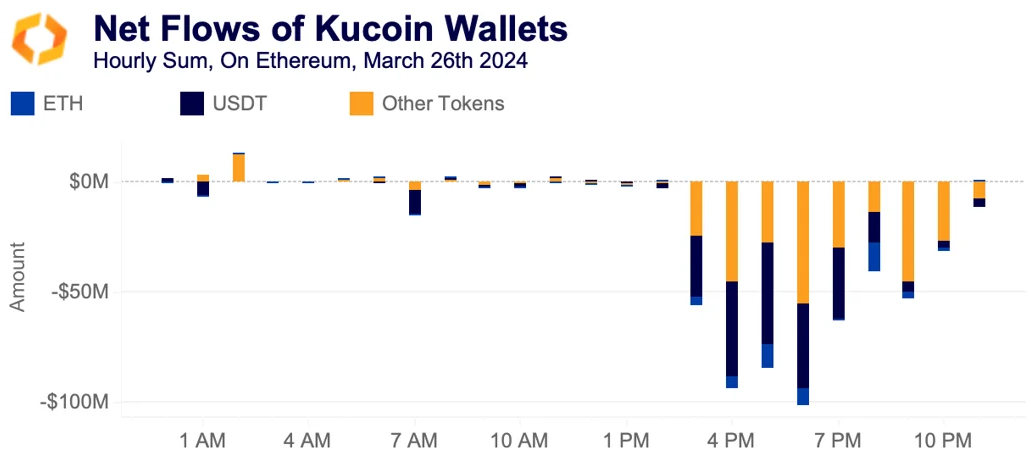
It's important to note that these inflows and outflows exclude all transactions made between Kucoin addresses and only include on-chain transactions between Kucoin and other exchanges or wallets.
Interestingly, we find that despite the DOJ's claims, there is no direct interaction between Kucoin and Tornado Cash on the Ethereum blockchain. However, all of the funds stolen from Kucoin's hack in 2020 have been "privatized" using Tornado Cash, representing a significant amount of ETH.
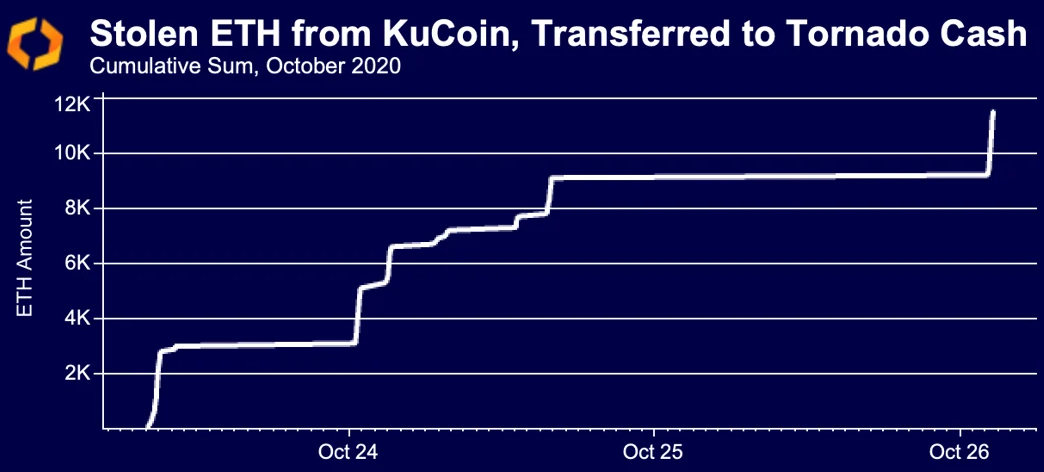
Although Kucoin managed to keep its market share relatively stable throughout last year's bear market, the recent charges and outflows may pose a significant challenge to the exchange's future growth.
What to expect from the next BTC halving?
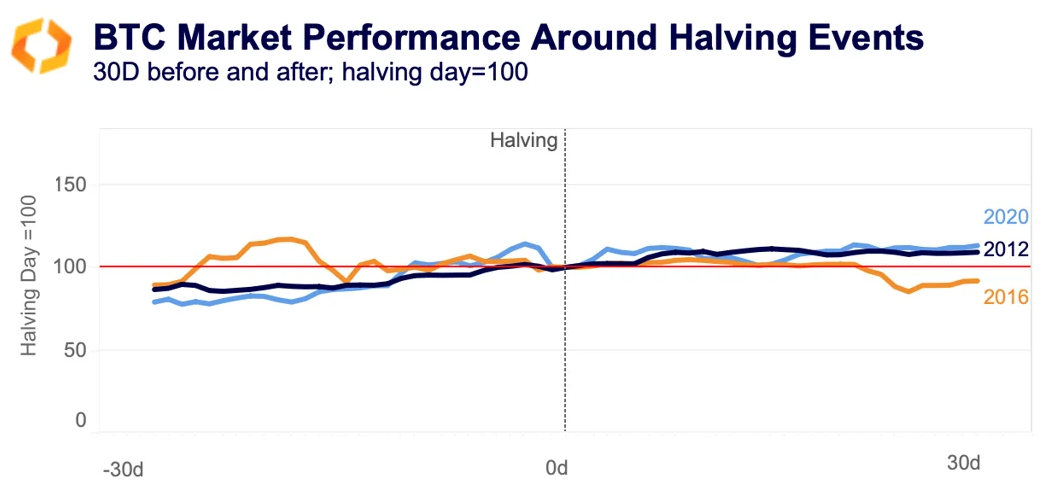
The upcoming Bitcoin halving event is just 15 days away and will reduce miner rewards to 3.125 BTC per block. While the short-term price impact of the halving has been mixed in the past, BTC tends to increase in the nine to 12 months post-halving, making it a generally bullish event. What will happen this time around?
Today, Bitcoin is closest to an all time high relative to all previous halving events. However, the approval of the spot ETFs contributed to a significant change in BTC's supply-demand dynamics, which could impact price during and after the halving.
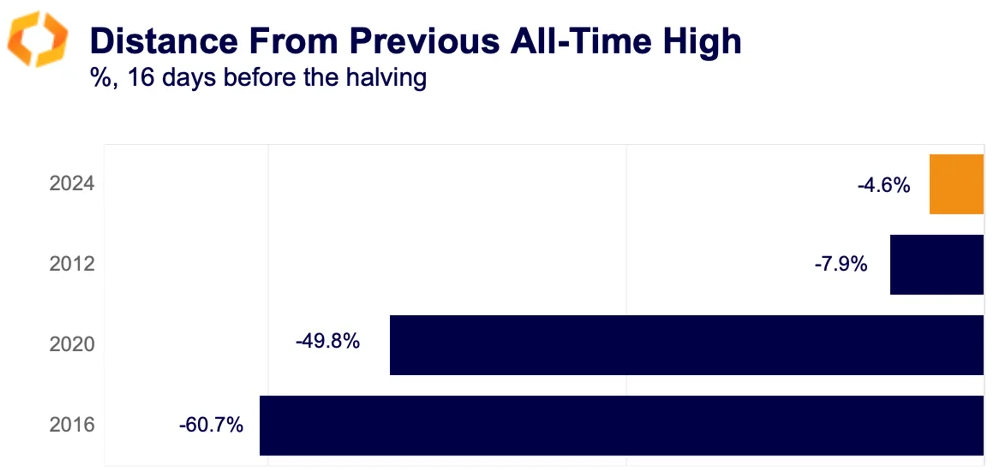
ETFs have seen strong overall inflows, which could suggest an immediate positive price impact as supply continues to drop. However, as noted in our Deep Dive, ETFs can also see rapid outflows which exacerbates selling pressure for the underlying asset during periods of market stress. So far, we have seen only one week of net outflows, but this could change.
Bitcoin closes its best quarter in a year
The first quarter of 2024 marked a significant milestone for the crypto market with the simultaneous launch of 11 spot BTC ETFs on the largest stock market in the world. This has had a positive price impact, with Bitcoin closing the quarter up 64%, its third best performance over the past three years.
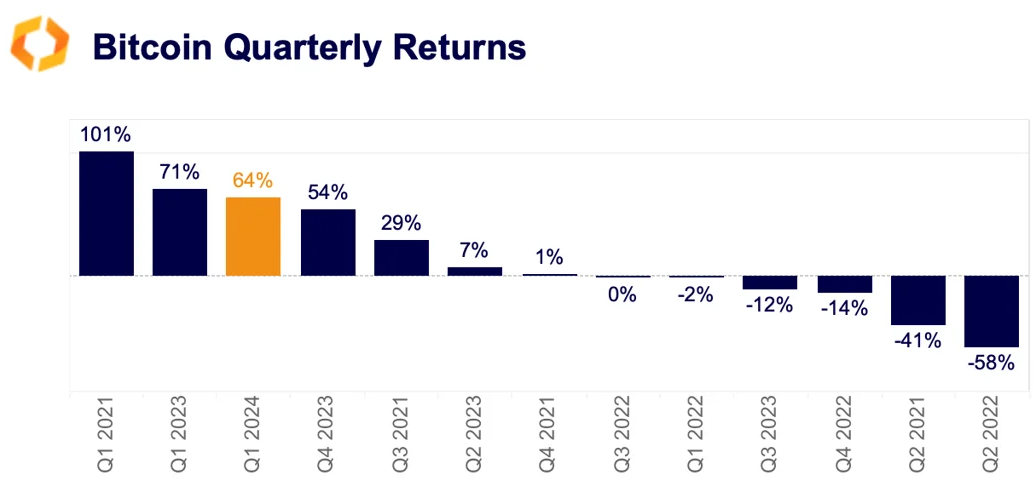
Trade volumes also saw a significant boost, indicating improved market participation. BTC volume totalled $1.4T in Q1, the largest cumulative amount in over two years. Smaller Asian exchanges like Bithumb, Korbit, Bitflyer, and Zaif saw the largest percentage increase in trading volume.

OKX and Bybit also experienced significant growth in trading activity. Binance lagged behind despite launching several zero-fee Bitcoin trading pairs in recent months.
Exchanges are (finally) listing new pairs

Since the end of November, the number of listed trading pairs on top centralized exchanges has increased by 5% to 4.5K, suggesting growing demand from traders and increased competition among exchanges. Bybit, Bithumb, and Upbit saw the strongest increase in new listings.
New listings had declined by 10% between mid-August and November, with Binance's regulatory hurdles in the U.S. being a significant driver of the decline. Despite the recent increase, the number of newly listed trading pairs remains below mid-2023 levels.
Bitcoin is less correlated with altcoins in 2024
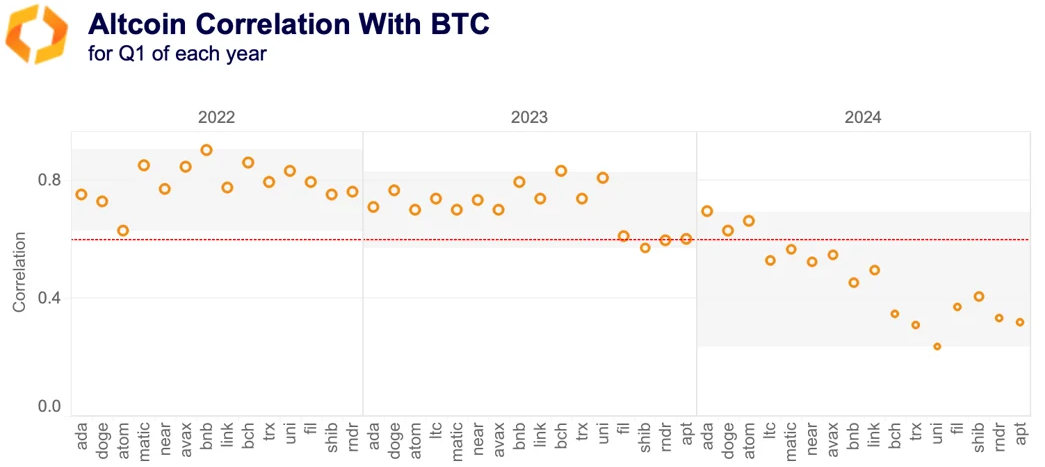
Bitcoin's 60-day correlation with altcoins has fallen to multi-year lows in Q1 2024, relative to the same period in 2023 and 2022. This decline can be attributed to institutional inflows into Bitcoin amid the launch of spot ETFs, while altcoins have been competing for liquidity. Uniswap's UNI token saw the strongest decline in correlation due to its increased volatility after its governance overhaul. Meme token SHIB and AI-linked RNDR also experienced a significant drop in correlation.








